Kumano Kodo Sea Pilgrimage Experience: Mikisato Beach Sea-Kayaking Tour
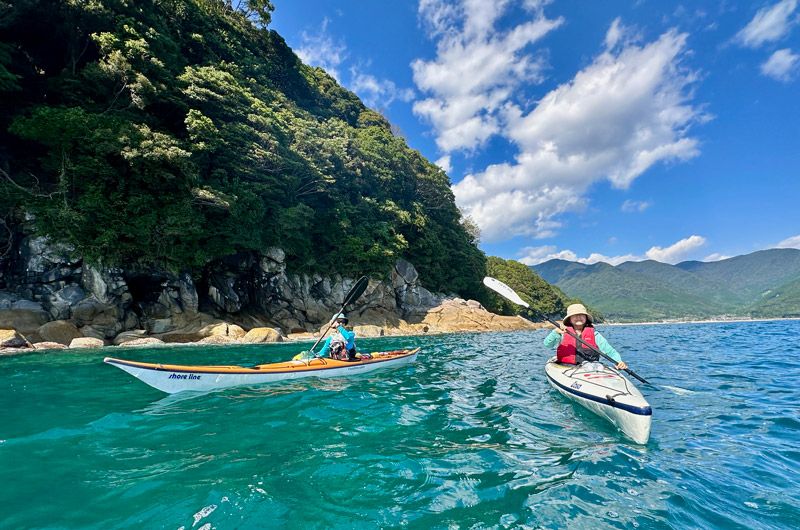
Kumano Kodo Pilgrimage Route connects the sacred sites of the Kumano Sanzan and Ise Jingu and was registered as a World Heritage Site as “Sacred Sites and Pilgrimage Routes in the Kii Mountain Range” in 2004. The traditional way to experience the Kumano Kodo Route is by hiking, but if you are seeking something more unique to experience, why not try a 6-hour sea pilgrimage? Evidence from a travel diary suggests that in the Edo Period (1603–1868) many pilgrims crossed using a similar route.
Written by Bonnie Chow
-Table of Contents-
・Preparation and Lesson
・Kayaking
・Seafood BBQ Lunch on a Raft House
・Walking tour to Asuka Shrine
・Transportation and Tour details
・Wrap-Up
Preparation and Lesson
I was a bit nervous before arrival, but luckily two experienced guides accompanied us, which eased my anxiety. My lead guide, Izumi, was very friendly in introducing the route to us by showing us a map and giving us time to get changed. After that, we were given a 30-minute lesson before getting into a kayak.
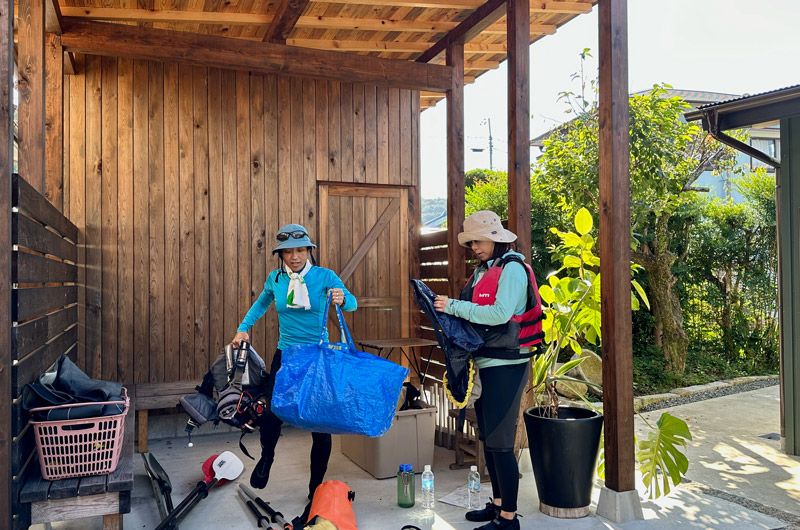
After getting changed, Izumi gave me a spray skirt to use on my kayak later
After I put on the wetsuit pants and the safety jacket, Izumi refreshed me on the basics of kayaking and how to stay safe in the sea.
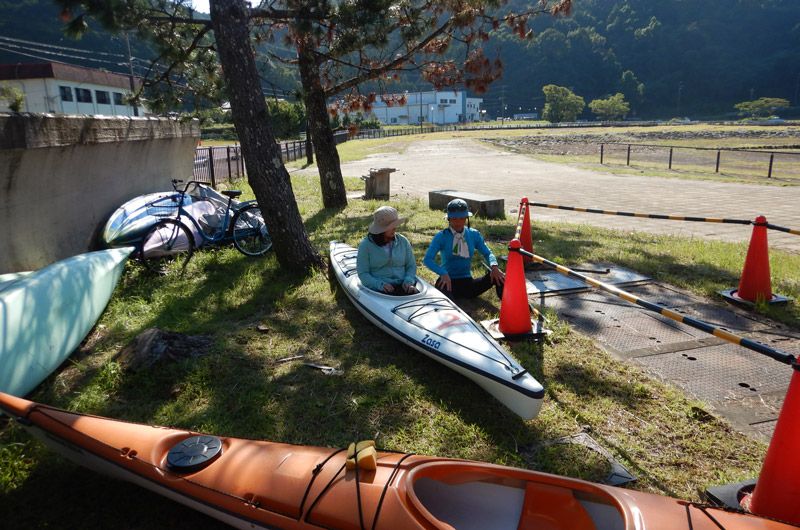
Learning the ropes
The first thing we reviewed was how to sit in the kayak. Then how to attach the spray skirt around the kayak opening.
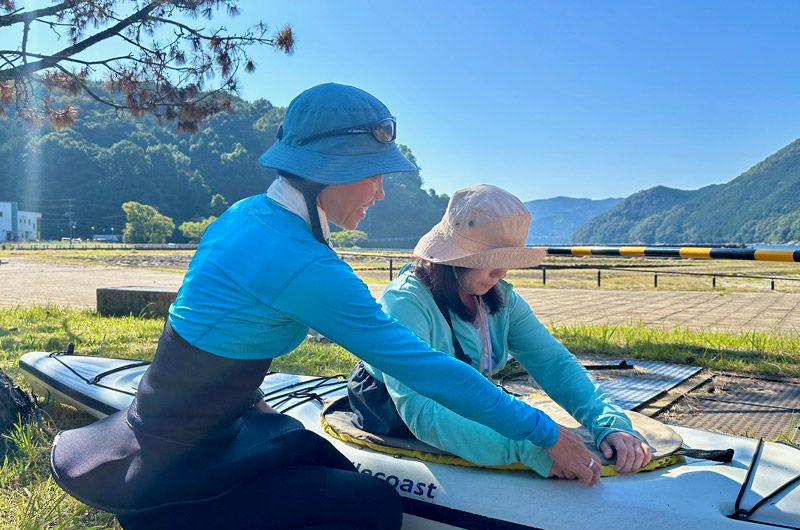
Izumi taught me how to attach the spray skirt around the kayak opening
We also covered the basic technique of paddling, and then we moved our kayaks to Mikisato Beach for departure.
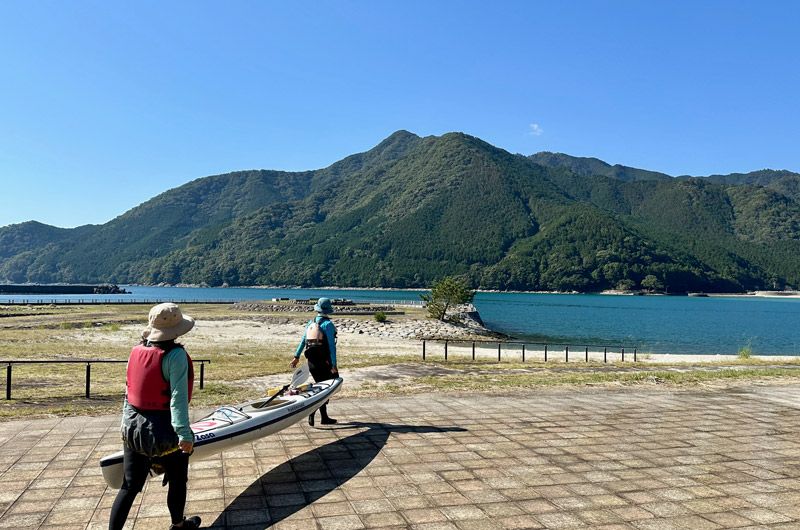
We carried the kayak to the beach for departure and were blessed with fine weather
Kayaking
In 2023, Mikisato Beach’s water quality ranked AA by the Ministry of the Environment in Japan. The 1km pure white sand and the clear water create a perfect condition for sea kayaking.
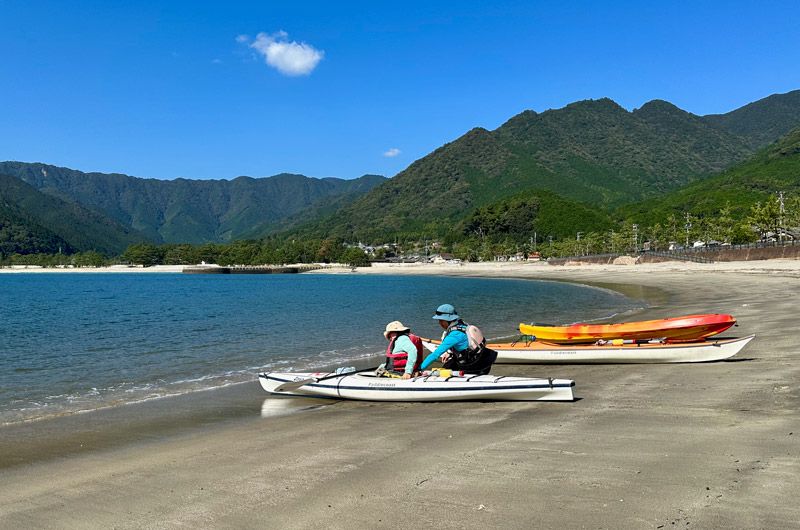
Izumi then pushed me off the beach
The sea kayaking experience was two hours in total. Once I was on my own, the first thing was to keep paddling as instructed by Izumi. The surrounding scenery was so beautiful, and the sea was very calm.
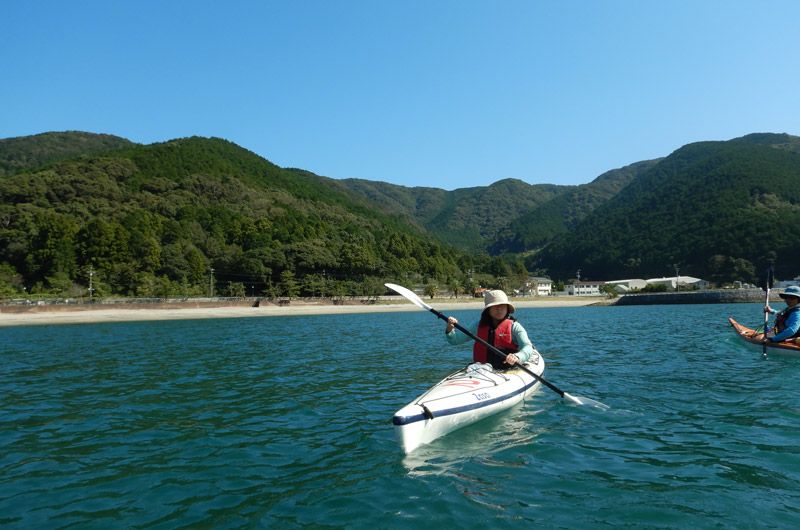
I learned to paddle forward and change direction
The waves were calm this day and paddling was a joy.
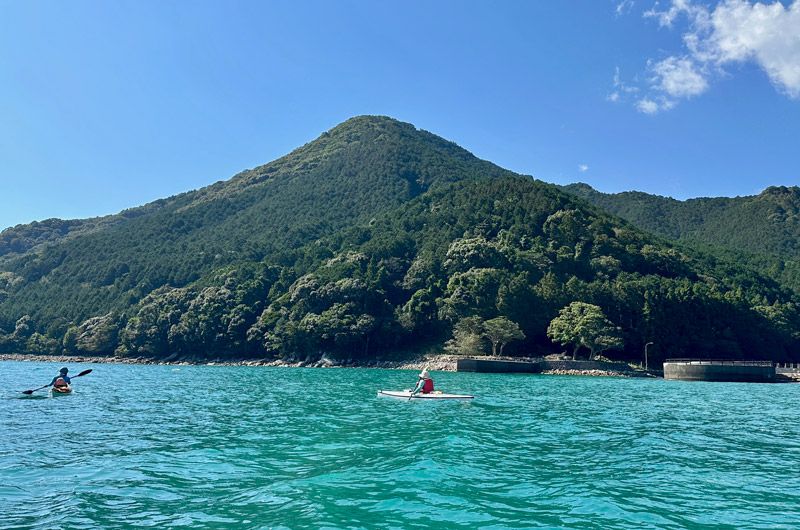
The surrounding natural scenery is stunning, and the sea is an amazing blue
Once I settled into the rhythm, I recalled how kayaking is an interesting activity for enjoying nature, too. Time flies quickly, especially during wonderful adventures.
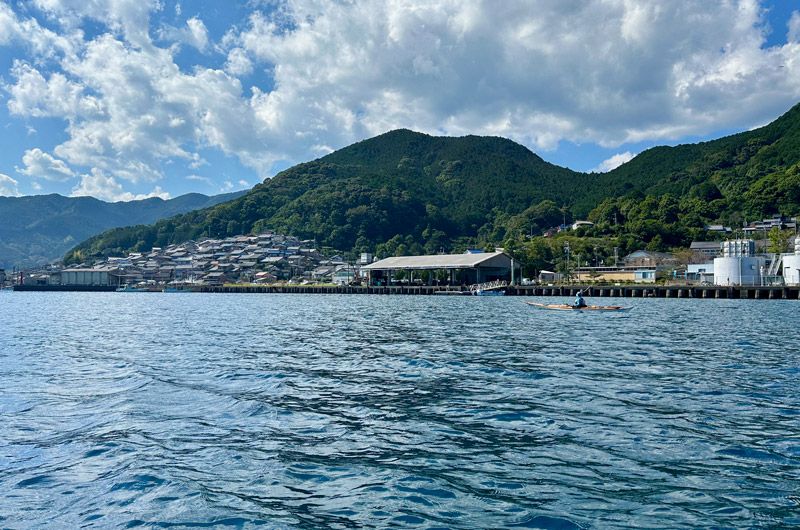
We passed by an amazing fishing village while heading to the end point of our journey
While I was kayaking towards the end point of our journey, suddenly I smelled an aroma coming from the mountain. Izumi told me that was the smell of kinmokusei (in Japanese) or osmanthus in English which is sweet-scented. Since we did this tour in October, the fragrance of the kinmokusei wafted in the wind. This lovely fragrance was the perfect end to our kayaking trip.
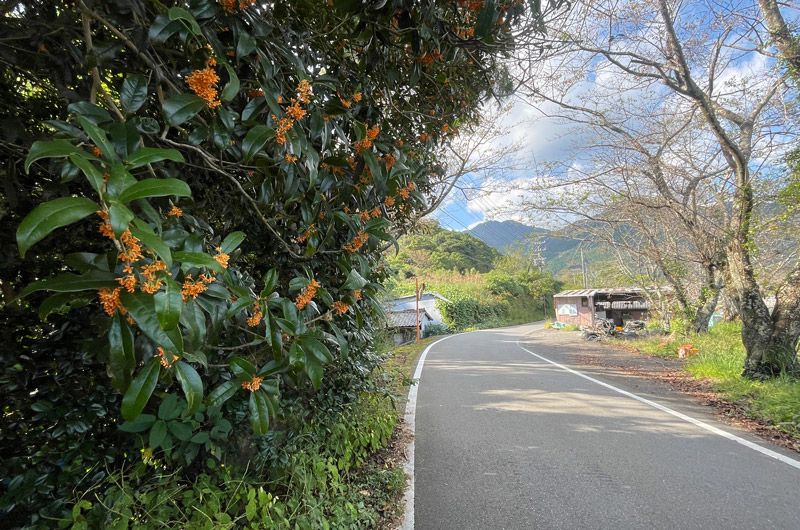
Fragrant kinmokusei flowers
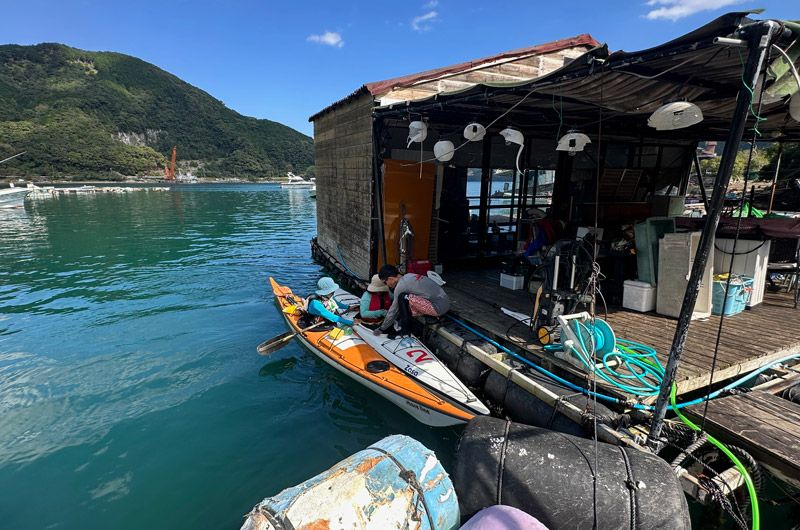
After 2 hours, I arrived at the end point of our kayak journey
Seafood BBQ Lunch on a Raft House
Finally, we were back on dry land, and it was time to fill our stomachs after 2 hours of outdoor activity. A seafood barbecue on a raft house awaited us!
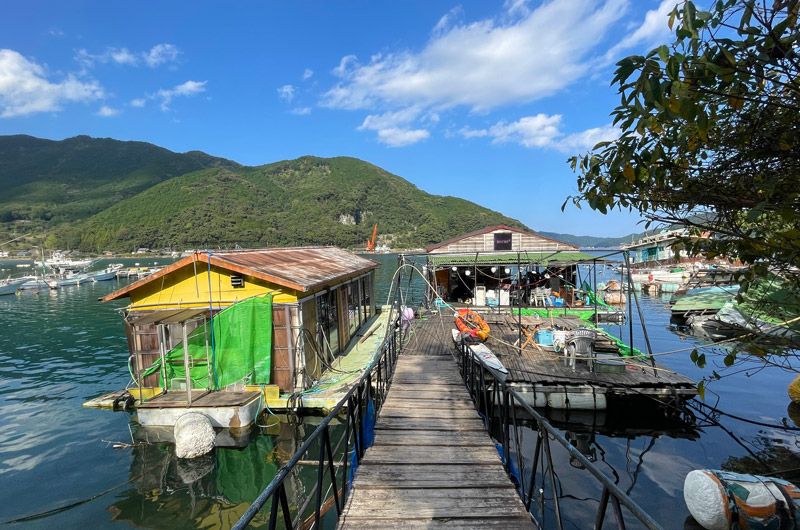
Seafood BBQ lunch is provided on a raft house surrounded by beautiful nature
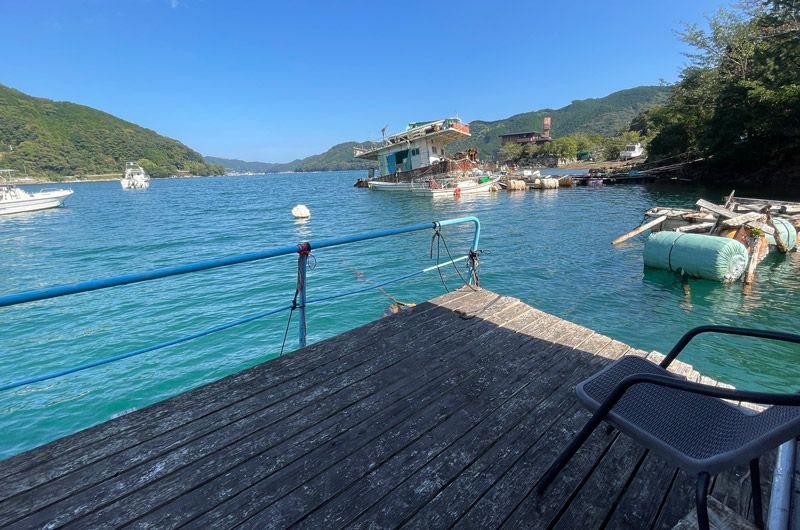
The scenery from the raft house is soothing
Since this area is blessed with a clean sea, Izumi prepared a bunch of fresh seafood from this area for us such as squid, shrimp, and scallops in addition to meat.
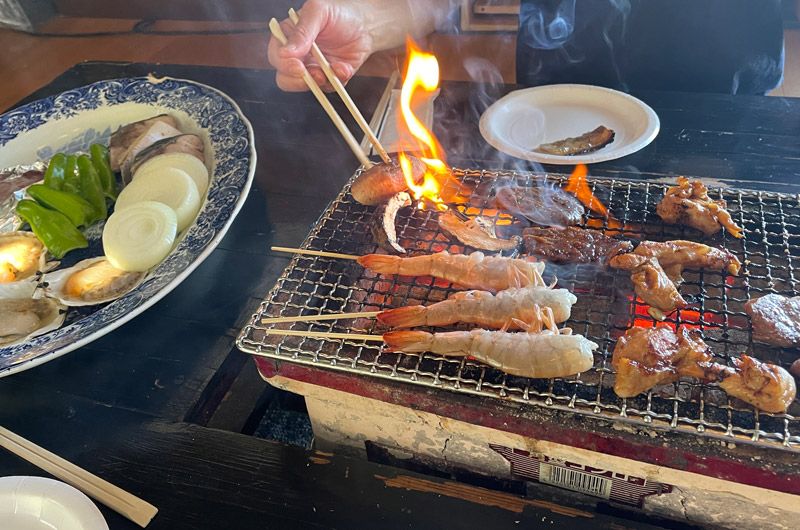
The fresh seafood BBQ served by Izumi was mouth-watering
We enjoyed chatting so much with Izumi and at the same time admiring the serene ocean view from the house. It was a very relaxing time for us.
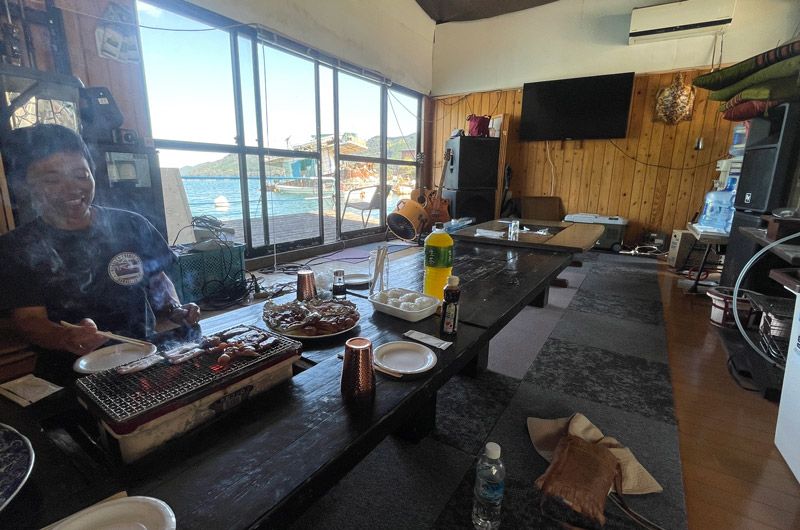
Izumi arranged the lunch at a raft house with wonderful scenery
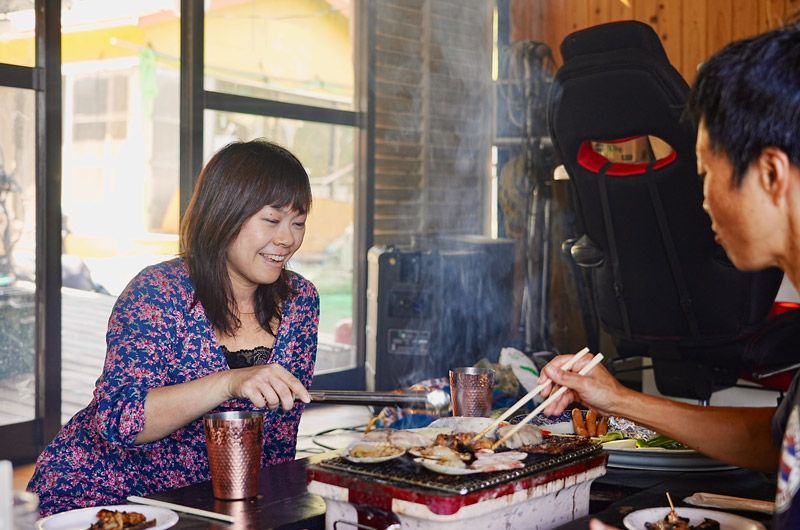
It was fun to grill the food together with our guide Izumi
Walking tour to Asuka Shrine
After a delicious meal, we took a walk to Asuka Shrine, the last spot on our tour. Many clay and stone tools have been excavated in and around the grounds of Asuka Shrine, showing that the area has been inhabited since the Jomon period (13,000 BCE to 400 BCE). The shrine is surrounded by lush greenery while huge trees are both inside and outside the shrine.